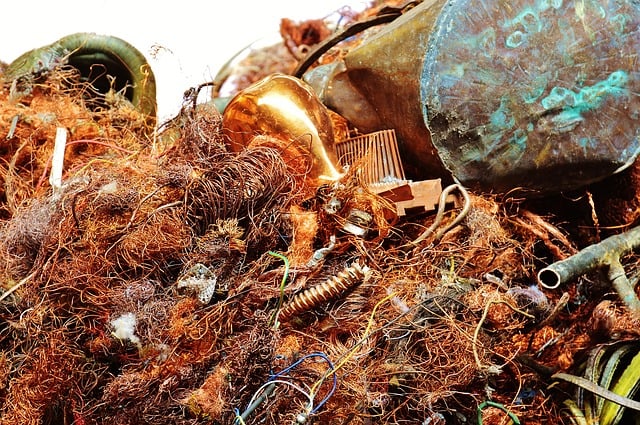A question that we hear from Clients every day is "Can I recover (copper - or other metals) from this?" The material in question can be concentrated wastes, dilute effluents,
Usually, the first questions I ask when a Client approaches us with a metal recovery or waste treatment application are:
What metals are you interested in recovering?
Is the metal(s) dissolved in solution? If so, what are the matrix and pH?
What is the concentration of the target metal(s) in solution?
Are there any other metals or impurities in solution?
What is the throughput or production rate?
Let's take a look at each of these questions to understand why they are important in the initial assessment of a metal recovery or waste treatment application.
What metals are you interested in recovering?
This question is important because not all metals can be recovered by electrowinning. The ability to recover the metals depends on their respective positions in the Electrochemical Series. The Electrochemical Series arranges redox reactions according to their standard potentials relative to hydrogen ion (H+). More noble metals such as silver and copper are good at accepting electrons and therefore easy to
To download fill the form below
Is the metal(s) dissolved in solution? If so, what is the matrix?
The easiest streams to recover metals from are those containing metals already dissolved, also known as "leached". Electrowinning is based on the principle of using an applied current to "win" metals from an electrolytic solution. If the metal(s) are already in solution, we are that much closer to being able to "
Certain metals will readily dissolve into some electrolytes, while not in others. Sulphuric acid is ideal to leach base metals such as copper and nickel, from which these metals can then be directly electrowon. During the process of electrowinning, the acid is regenerated and can be re-used within the leaching process. Nitric
Using different electrolytes to leach different metals can be used to our advantage in designing a process as we can selectively leach some metals so they can be subsequently
Another consideration is conductivity of the leach solution. The process of electrowinning involves the application of a DC current. If the electrolyte has a high conductivity, the resistance of the solution will be low resulting in a lower cell voltage. On the other hand, if the electrolyte has a low conductivity, the resistance of the solution will be high resulting in a high cell voltage. This is important because a high cell voltage will result in higher power consumption and higher operating cost. In countries with high power costs, this could be a decisive factor in terms of project viability.
What is the concentration of the target metal(s) in solution?
This is an important question because it determines what type of technology(
Another consideration when it comes to concentration is the current density that can be used and the current efficiency that can be expected. In a very general sense, the higher the concentration of metals in solution, the lower the current density that will be necessary and the higher the current efficiency. Similarly, the lower the concentration of metals in solution, the higher the current density required and the lower the current efficiency.
Are there any other metals or impurities in solution?
This question is important for several reasons. First of all, it relates back to the Electrochemical Series. If there are impurities in a solution that are less reactive than the target metal of interest, it may not be possible to recover without first addressing the impurities. The impurities present in solution, depending on their position(s) in the Electrochemical Series relative to the target metal ion and their respective concentrations, may impact the purity of the metal product. One impurity that is of critical importance is iron. Dissolved iron can exist in the ferric (Fe3+) or ferrous (Fe2+) states. When ferric is present in solution and a DC current applied, it will be reduced at the cathode to produce ferrous. At the same time, ferrous is oxidized at the anode to produce ferric. This oxidation-reduction (redox) pair does nothing but consume current (i.e. lower apparent current efficiency) and may also impact the quality of the cathode product. In copper electrowinning, for example, the relative concentration of copper to iron is important as too much iron as ferric may impact current efficiency and copper cathode purity requiring a pretreatment stage to remove iron prior to electrowinning.
What is the throughput or production rate?
This question coupled with the concentration of metal(s) in solution allows us to estimate the size of the electrowinning circuit required for the particular application of interest. Some throughputs may be too small to be economically viable using available technologies. Understanding the project drivers early on allows us to tailor a solution to a Client's unique requirements and in some cases even suggest alternative approaches that in our experience may result in a higher return, faster payback, or greater impact to a Client's bottom line.
Can I recover copper from this?

As you can see from the discussion above, there are many factors to consider when evaluating a particular material or stream to determine if copper recovery (or nickel, silver, tin, gold, etc) is possible. The more information that a Client can provide in each of these areas the more detailed response we can provide in return. In some cases, a Client may not have all of the answers so we try our best to estimate or provide recommendations based on our experience. Following an initial successful evaluation, in most cases, we recommend a basic laboratory test program to demonstrate copper recovery and confirm operating parameters. With this data, we are able to design a full-scale emew system to recover metals for your copper recovery and/or waste treatment application.
To download fill the form below





